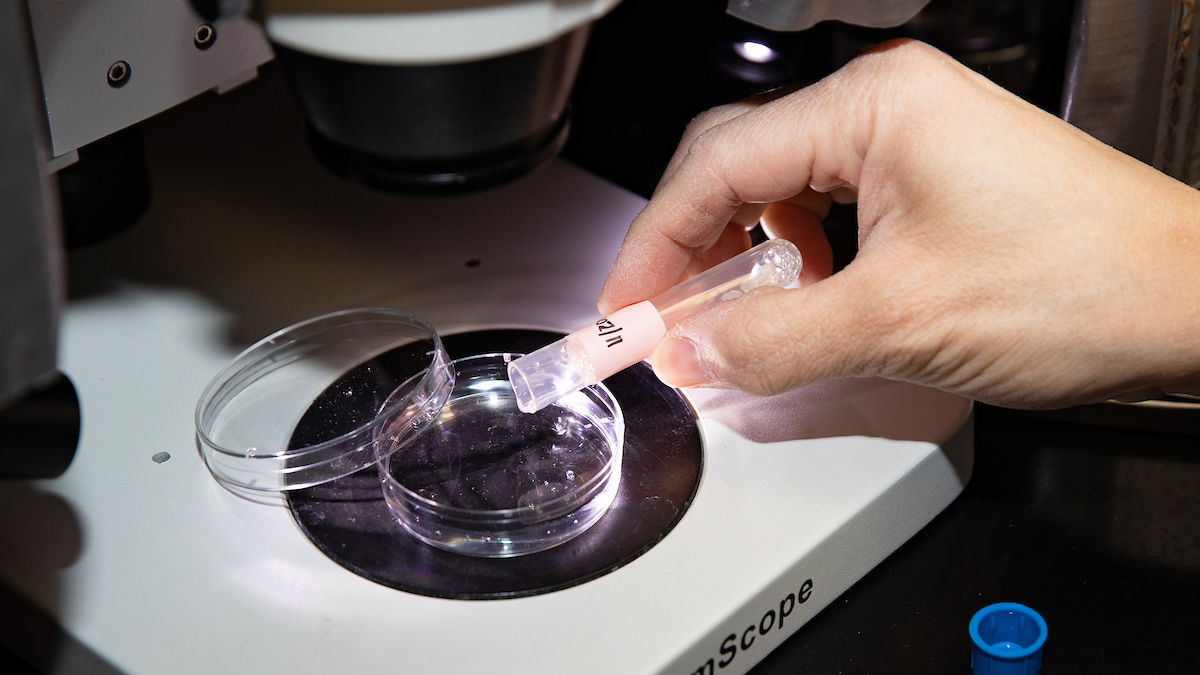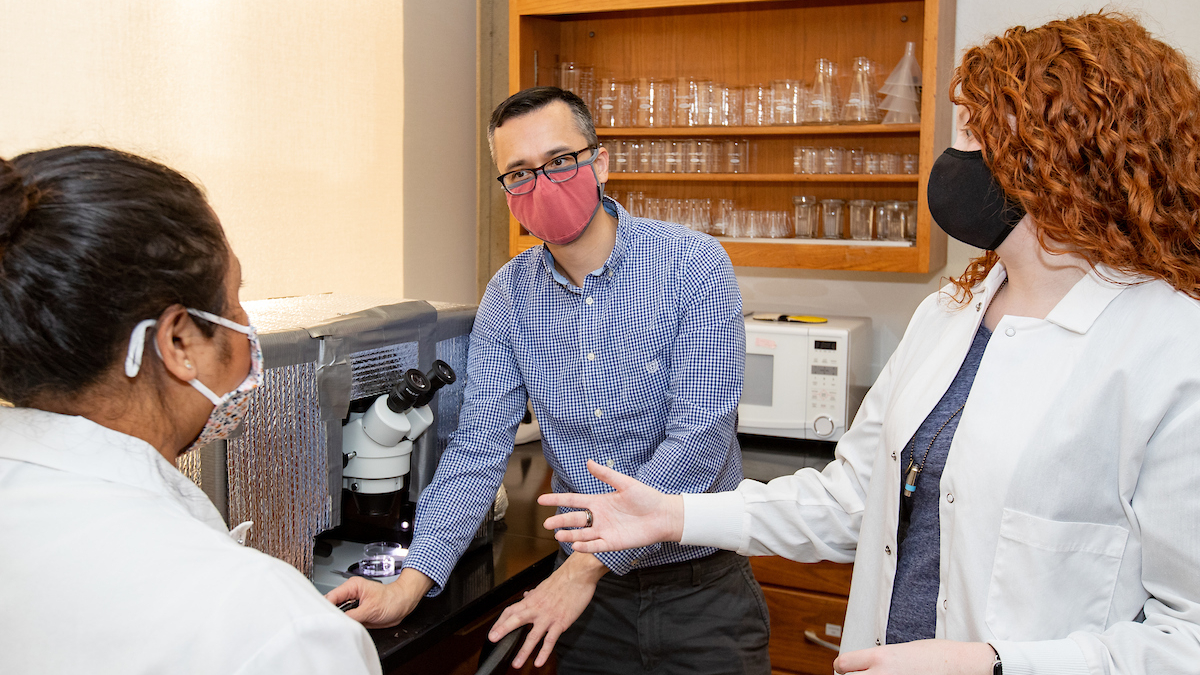Go with the flow
The associate professor of biology at Missouri State University makes his research and teaching understandable by comparing scientific processes to items you probably have lying around your house. A garden hose. Bottles of perfume. A paper towel roll.
It’s all in the name of working toward a solution that could save people who are born with congenital heart and vascular conditions. He has a simple central research question: How does the cardiovascular system form to begin with?
Congenital heart defects affect about 40,000 births every year in the United States, according to the Centers for Disease Control and Prevention (CDC), and congenital vascular anomalies affect nearly 1% of all births.
“If we understand the rules of how to build a blood vessel,” Udan said, “we could repair or even build vessels outside of the body.”
An expert in the field of cardiovascular development, Udan has published 20 articles and presented 25 times on the topic.

In Dr. Ryan Udan’s biology lab, he and his students research how blood vessels form.
A ‘magical’ event
Researchers know some about how the cardiovascular system develops in humans. The process starts as single cells connect to each other and form tubes. Then those tubes can connect to other tubes or branch out to form new tubes. But researchers don’t know everything.
“A scientist probably wouldn’t ever say ‘magic’ because there’s a reason for it. But yeah. Blood vessels are kind of magical.”
That’s why Udan and his team of student researchers are experimenting with embryos from several organisms, including zebrafish and mice. Drugs and substances can change the cardiovascular development of a mouse embryo, which provides useful information that translates to human beings.
Of particular interest: How do blood vessels close to the heart accommodate more blood flow than capillaries farther away?
First, vessels closer to the heart must get bigger in size. “They actually somehow magically come together and form a bigger vessel,” Udan said.
Second, the tissue that makes up these large blood vessels has to become thicker than capillary tissue.
“I think of it like a paper towel roll. The inner lining of the vessel is like the cardboard tube, and a bunch of paper towels that surround it are the extra layers of smooth muscle cells,” he said.

Students, like Gazi Shamita and Dailyn Jones, are integral to Dr. Ryan Udan’s lab.
Six-figure grant moves the needle
Udan knows that blood flow creates a mechanical force to tell certain vessels to get bigger and to form a thicker tissue. Udan compares the process to using a garden hose.
“When you turn on a hose, there’s pressure,” he said. “If you turn on the nozzle, water flows because there’s friction from the water against the wall of the hose.
“The same thing happens with these blood vessels. They get this mechanical force. That force turns on the genes, so they change themselves.”
Udan doesn’t know exactly how or why those cells decide to surround the larger vessel. But thanks to a $415,000 AREA grant from the National Heart, Lung and Blood Institute, he will be able to conduct more research in that area.
“An embryo starts as a single cell. After a period of time, suddenly you see blood, you see a heart and that heart connects to those blood vessels.”
The hypothesis? High-force vessels send a chemical signal to tell smooth muscle cells to come over to that location.
“Imagine you walked into a room and somebody opened a bottle of perfume,” Udan said. “Even if you had a blindfold on, you’d probably be able to smell around until you found where the bottle is.
“We think those high-flow blood vessels are sending out molecules, which the smooth muscle cells sense, and move there. There’s a whole other thing we’re trying to study in terms of how it knows to attach to that vessel.”

Student Dailyn Jones conducts research in Dr. Ryan Udan’s lab.
Udan: Intelligent and kind
With the grant money, Udan will be able to pay undergraduate student researchers in his lab. He also has graduate student researchers who’ve worked with him on blood vessel research and participated in professional conferences.
“They’re actually learning how to do science,” he said. “Some of it’s physical, some of it’s mental and some of it’s organizational.”
Rachel Padget graduated from Missouri State in 2017 with a master’s in biology. She’s now pursuing a Ph.D. in translational biology, medicine and health at Virginia Tech and said she appreciated how much Udan cares about his students.
“Some of the techniques we used for our projects were very precise and delicate, and he was always patient with us and kind to us,” Padget said.
Udan stresses that lab time with the students is invaluable: “I really feel like I try to give them a comprehensive training experience.”
- Story by Kevin Agee
- Photos by Kevin White
- Video by Chris Nagle


Doing research with Dr. Udan as an undergrad is what allowed me to pursue a PhD at Baylor University. I am very grateful.